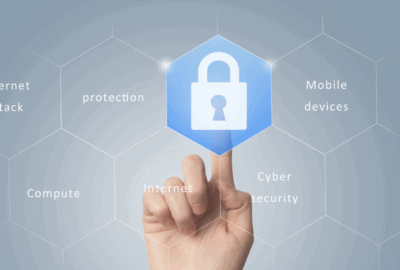Privileged access is often the main target of hackers. This is because administrators’ accounts are the gateway to all sensitive information within companies. However, with Privileged Access Management (PAM) you can maintain control over the vital accesses of your systems.
 Generally, companies keep constant monitoring of regular users. They limit employees’ or customers’ access to avoid information leaks and platform changes. And while these protocols are essential, they often leave aside risky user activities related to developer credentials or DBAs.
Generally, companies keep constant monitoring of regular users. They limit employees’ or customers’ access to avoid information leaks and platform changes. And while these protocols are essential, they often leave aside risky user activities related to developer credentials or DBAs.
Without the adequate protection of your privileged accesses, you may receive attacks from external agents or even from your own employees. For this reason, here we explain what the PAM is and how it can help you.
What is Privileged Access Management (PAM)?
Privileged Access Management or PAM software solutions can give you total control over advanced users, detect threats, and attack suspicious activity in every session.
They are in charge of modifying and granting centrally access credentials. Execute workflows to comply with usability protocols such as COBIT, GLBA, HIPAA, HITRUST, ISO-27002, ITIL, MASS 201, NERC-FERC, NIST, PCI, and SOX.
Also, prevent the misuse of software and hardware by limiting credentials and rotating SSH Keys. In addition, these solutions are able to detect vulnerabilities through context analysis and pattern identification.
With a PAM, you are able to grant permissions to external contributors without violating your VPN. And at the same time, you can integrate the Privileged Access Management API into other security software.

PAM and IAM, are they the same?
Identity and Access Management (IAM) technology is often confused with PAM. However, IAM solutions are only designed for users with regular limitations. These accounts can be created, deleted and configured at any time. A totally different mechanism happens with privileged access.
Administrator-level accounts are usually run by different users. Sometimes they are human, sometimes they are AI. These accounts exist whenever the network or systems are active, as they are responsible for executing operational processes. This is the importance of the Privileged Access Management software application and its main difference with IAMs.
Below, we lay out the scope of Privileged Access Control Management:
Say goodbye to access vulnerabilities
Do you know which business assets are at risk when you stop monitoring privileged accesses? The most important. Databases, financial information, confidential records and the entire architecture of your network. An attack on one of these pillars can generate millions in losses and affect the credibility of your business.
Fortunately, PAM solutions eliminate any vulnerability related to your advanced accesses.

# 1 Privileged Password and Session Management
Default local accounts, administrator accesses, emergency, and hypervisor administrator accounts. All your privileged accesses can be protected after the automation of key management. Accordingly, the rotation of credentials and contextual sessions are some of the most powerful tools.
PAM software use resources such as PuTYY and MTSC to ensure more reliable connections between the user and the network. At the same time, they can grant granular access by limiting system usage to certain times, dates, systems, and locations. They also offer a rotation of SHH keys through the passwords grouping and send alerts after each session.
On the other hand, Privileged Access Management allows you to control quick accesses. It can remove passwords embedded in applications and scripts; as well as ensures the removal of passwords after each session. Thus, it is virtually impossible for intruders to find vulnerable and reusable permissions.
While PAM manages entries and exits, it can take records of the behavior of access requests. It is able to identify the level of risk of connections, activities within authorized systems and differentiate malware from real users.
# 2 Endpoint Privilege Management
It reduces the vulnerability in your endpoint privileges. Limits and monitors all computing devices and structures. Whether they are computers, servers, as well as IoT, ICS and SCADA resources. It allows you to elevate the security levels of specific applications, prevents the credential transfer, audits daily access activities, and executes high commands without granting root access.
# 3 Remote access control
You can reduce the permissions of your vendors and employees without interfering with their work. PAM can send privileged access without sharing your VPN or creating security breaches in the transmission of data packages. Allows you to designate to administrators the necessary tools to execute processes while closing the entrance to other modules, applications, and commands that are not necessary at that moment.
The reporting system of PAM software is in charge of documenting the trace of the users in your systems. It records statistics, takes videos and follows changes. In this way, you can control the level of SLA and other protocol compliance by third parties and your IT department.

# 4 Threat management
PAM software are ideal for vulnerability prioritization.
They use intelligent scanning to identify, analyze, and take action on vulnerabilities across all your digital assets. Whether hosted on-premise, in the cloud, in virtual infrastructures, in mobile devices, or in containers.
You can compare the performance of systems to industry standards, legal regulations and various security protocols. With this holistic analysis, it is easier to make decisions about privileged access dynamics, consider implementing other technology solutions, eliminate processes and change workflows.
When it comes to managing the privileges of large enterprise systems, we recommend BOMGAR Software for Secure Access. It includes a package of resources specialized in improving security practices with your suppliers, offers total control of your superior accesses with a personalized interface and allows the integration of CRM software.
At GB Advisors, we can help you optimize your processes and implement new technological solutions. Contact us for consultation.



